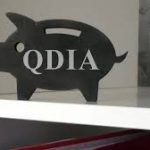Times have changed dramatically in the Cash Balance plan investment world and those who aren’t keeping up are feeling the burn. These tax-favored plans began rising in popularity back in 2007, after the 2006 Pension Protection Act (PPA) clarified their legality. Plan assets were typically invested with the 30-year Treasury Rate or a similar safe harbor rate as a target. At the time, this choice appealed to everyone and was easy to achieve: the 1-year Treasury bill yielded higher than 5% and the 30-year Treasury Bond yielded nearly 4.75%.
Fast forward to 2016: Treasury yields have plummeted, interest rates hover near zero, and global market volatility is the norm. Many Cash Balance plan advisors seeking net returns in the 5% to 6% range are taking on high levels of equity risk without understanding the consequences to plan sponsors.
Our goal in this article to help advisors and plan sponsors understand the unique strategy required for successful Cash Balance plan investing, and how to adapt these strategies to a volatile low-interest market environment.
Take a Step Back: Understanding How Cash Balance Plans are Different
The most important thing to remember about Cash Balance plan investing is that assets must be “marked to market” (the value if liquidated on that day) at the end of the plan year. The plan’s funding level must be certified by an actuary, and there are consequences for both over-performing and under-performing the targeted Investment Crediting Rate (ICR). Underfunded plans can incur penalties, benefit restrictions and higher PBGC premium rates, along with other challenges. Overfunded plans can result in tax excise penalties and loss of tax deferral opportunities. In short, Cash Balance plan investments don’t have the luxury riding out a three- to five-year market cycle the way defined contribution plan portfolios can.
Survey Says: Problems on the Horizon
A common ICR today is a flat rate of 5.5%, according to a recent survey by the American College of Pension Actuaries (ACOPA), and flat rates of 6% are not uncommon. The actuaries recommending these rates to clients may seem to have good reasons for doing so. These higher ICRs appeal to clients at the point of sale while also creating a predictable and cost effective IRS nondiscrimination testing environment.
Now enter the advisor trying to achieve a 5.5% or higher return within a one-year horizon. After adding investment expense ratios, advisor compensation and custody fees, the investment strategy needs to gross 7%-8%, in order to net 5%-6%. Where do advisors turn for risk-free returns? The Federal Reserve brought the 5% one-year rate tumbling down to 0.37% by the end of 2008 where it stayed through October 2015, before finally rising to 0.65% at the end of 2015. Today, in summer 2016, it sits at approximately 0.50%. The long bond has shared a similar fate, dropping from an approximate 5.5% level in mid-2006 to 2.50% today.
Trying to climb back up that hill is becoming more treacherous by the day since the value of bonds move in the opposite direction of interest rates. Each 1% climb back towards “normalcy” of 5%-6% for the long bond, will result in a duration risk exposure of approximately 20%-25% to the downside. If and when rates start that long-term climb, the headwind on the fixed income portfolio will be pretty stiff. For example, a Total Return Fixed Income portfolio with a 3% yield to maturity and a 6 year duration, can lose nearly all of that 3% yield with a 50 basis point rise in interest rates.
Between now and when rates start climbing, interest rates will do one of three things: (1) stay at current levels, generating an average of 1%-4% yield depending upon the portfolio’s duration, credit quality and other factors; (2) move within a range of rising and falling rates which will most likely generate negligible returns, depending upon duration, credit quality and timing of the investments or (3) decline or move into negative territory like we are seeing in other parts of the world.
The first two options will almost certainly guarantee a shortfall for many Cash Balance plans unless the strategies selected are earning higher yields from lesser quality fixed income securities.
The third option could become a reality if the economy or the markets reaches crisis mode and the flight to safety from volatile equity markets drives yields lower and values higher. But if this flight to safety resembles anything like the recent volatility in 2016, only the very high quality credit and Treasury bonds (with paltry yields) will benefit meaningfully from the drop in rates. Portfolios heavily laden with lower quality fixed income securities will likely not benefit. Rather, they would be hit hard if they end up being in the wrong place (high yield) at the wrong time (market/economic crisis).
Very few advisors have the desire, ability or time to wade through these investment strategies and stress test those holdings against the various interest rate scenarios and the client’s risk tolerance. For many, the issue is distorted by placing too much emphasis on past performance, fund fees or, in some cases, compensation, while disregarding this critical analysis. Advisors forget that they are dealing with Cash Balance plans which must be “marked to market” at the end of each year. I promise you that neither Jeffrey Gundlach nor Bill Gross, as talented as they are, are contemplating the Cash Balance investment protocol as they manage their plan assets at DoubleLine or Janus.
Why Advisors Are Turning to Equities and What’s Going Wrong
Given all of the issues in fixed income markets, advisors are turning toward equities. Fourteen major investment banking firms came out in December 2015 predicting a higher US Market at the end of 2016, by an average of 6.5%. If we accept that prediction, advisors would have to use significant equity allocation to have a chance at hitting a 5% to 6% ICR. They do so hoping that equity markets cooperate in order to meet those targets. But as we like to say, hope is not a strategy. How much upside is left in this tired bull market compared with downside potential? By several different PE measures, the S&P 500 Index is richly valued. Is the equity-risk premium still worth it?
In preparing our 2016 National Cash Balance Research Report, we studied the portfolio allocations of 700 Cash Balance plans. We were shocked at what we found. The average plan had a 40% weighting in equities and some exceeded 60%. Many asset allocations embrace an “all world index” approach similar to how you might invest a long-term 401(k) profit sharing plan or a wealth management client’s portfolio for someone with at least a decade prior to retirement.
Plan assets invested in this manner are extremely vulnerable. If, for example, the equity markets fall by 20% or more and fixed income stays constant, a Cash Balance plan with a 50% equity allocation will result in a 10% negative return. With an ICR of 5% to 6%, the shortfall would be more than 15%. A $2 million plan could end up with a $300,000 shortfall. The plan sponsor would need to make up that shortfall in order to prevent consequences such as freezing or limiting benefit payments, and paying significantly higher PBGC premiums.
A widely-shared article in the Wall Street Journal this year titled, “Pension Funds Pile on Risk” should be required reading for every Cash Balance plan advisor and sponsor. The article explored the risks incurred when pension fund managers taking on a more volatile mix of stocks, real estate and private equity in attempting to match prior returns achieved through fixed-income.
One chart lays out the message very clearly: a 100% fixed income portfolio in 1995 generated an expected return of 7.5% with a standard deviation of 6.0%. By 2005, the fixed income allocation dropped to 52% with the balance in equities, real estate and private equity to get the same expected return with a slightly higher standard deviation of 8.9%. By the end of 2015, the asset allocation required to achieve an expected 7.5% return (which is needed for those plans that have a 6% ICR since fees have to be netted out of the gross returns) is 12% bonds, 63% equities, 13% real estate and 12% private equity. That kind of allocation generates a standard deviation of 17.2%, nearly three times the level of risk needed in 1995. With Cash Balance assets soaring and equity allocations increasing, it’s just a matter of time before many plan sponsors and their advisors are confronting major shortfalls.
Caveat Plan Sponsor
These increasingly common high equity allocations and complex asset allocation models are creating a significant threat to cash flow for many plan sponsors during the next bear market. As we have emphasized throughout this article, if plan sponsors cannot make up shortfalls at the end of each year, the underfunded status can result in penalties, benefit restrictions and higher costs. As an advisor working with Cash Balance plan sponsors, now is the time to adapt your strategy to one designed specifically for Cash Balance plans and to ensure your plan sponsor clients are well informed and prepared with realistic expectations about returns in today’s volatile and challenging low interest rate environment. We have provided some guidelines below:
Three Things Advisors Should Avoid:
- Avoid “relative return” styles of asset management unless using considerable due diligence and a tight monitoring approach. Relative return may work for a while if everything is moving in the right direction, but it is very challenging to solve an absolute return problem using a relative return formula.
- Avoid the temptation of using managed portfolios, risk-based or target-date based strategies that were created for a completely different purpose. These strategies live in the “relative return” world as well, and they have little correlation with a Cash Balance plan’s requirements. Strategies designed for traditional defined benefit plans are also inappropriate. Likewise, “modern portfolio theory” principles that work for longer investment horizons do not work for Cash Balance plans.
- Forget the “set it and forget it” investment approach. You simply cannot set up a strategy in January and check in at the end of the year to make adjustments. The velocity of change in the economy and the markets demands an ongoing review and potential re-allocation as asset classes move.
Four Things Advisors Can Do Proactively
- Partner with an experienced actuarial firm who can help you and the plan sponsor understand both sides of the plan design equation: investments and actuarial calculations. Far too often critical plan design questions are based on actuarial design and IRS testing issues, ignoring the investment climate. Many firms only consult on safe harbor ICRs and ignore or do not understand the Actual Rate of Return option. Ask your actuary to run scenarios that show how a lower ICR impacts testing. Yes, the coverage benefit costs to staff may be slightly higher, but that is preferable to choosing a 5% or 6% ICR and being confronted with major shortfalls year after year. This funding liability cost may dwarf the higher staff costs.
- Choose an “absolute return” Cash Balance strategy seeking to stay in positive territory and, weather permitting, sail towards the plan’s ICR each year with an ongoing review and rebalancing of the strategy throughout the one-year time horizon.
- Set realistic client expectations: help your client understand that achieving a net 5% to 6% ICR is going to be nearly impossible to achieve, unless they are willing to accept significantly higher risk and be prepared to fund shortfalls.
- If your client has an existing plan with a high ICR, find out how to change it. There are several options available for plan sponsors, and the details go beyond the scope of this article. Contact us for a full discussion of the range of possibilities to extricate your plan from a plan design with a problematic ICR.
The Kravitz team remains at the ready to review your current plan and investment strategy to determine your best course of action. Reviews are complimentary and could help you avoid a significant threat to the company or firm cash flow. If nothing else, you will have a strong understanding of what you own, why you own it and what the potential risk to the plan and the cash flow may be. Warren Buffet has said, “Only when the tide goes out do you discover who’s been swimming naked.” We may be in for a rude awakening of “naked” Cash Balance plans this year as volatile markets mix with high risk portfolios seeking unrealistic ICRs. Don’t let yours be among them. Contact us for more information.







